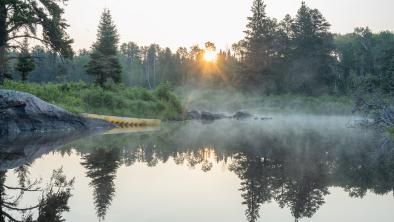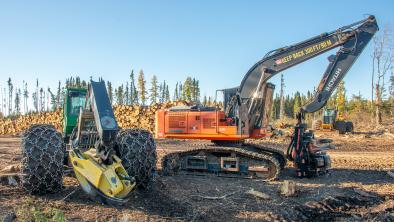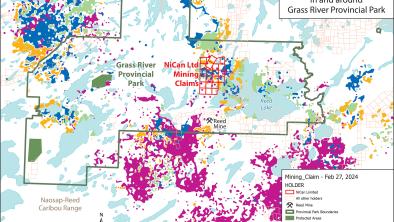Standing strong against industrialized parks
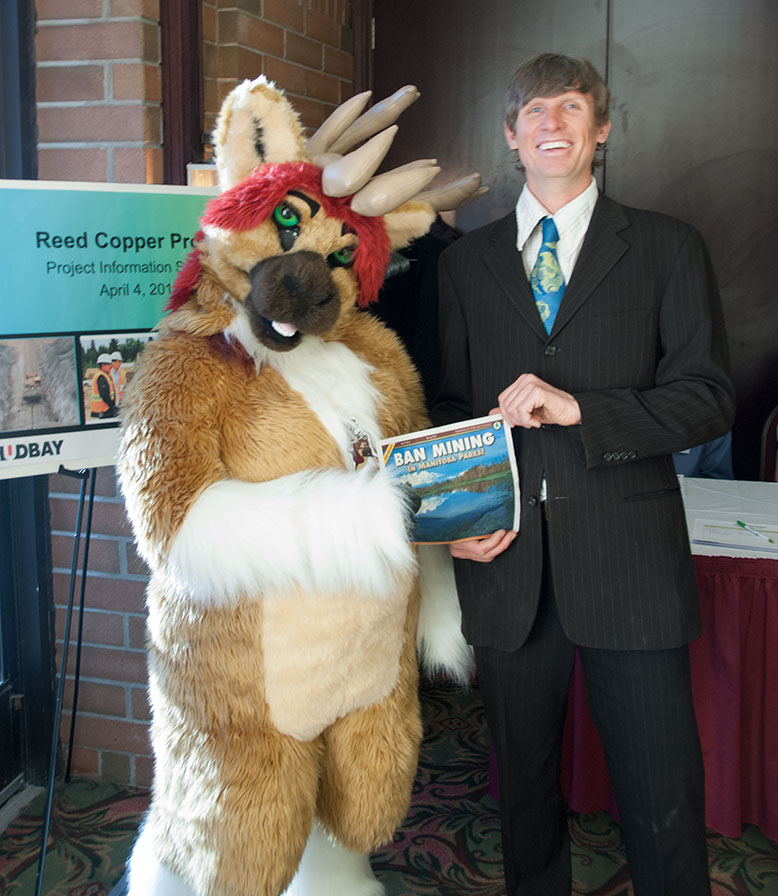
“I just can't get past the fact that this is a park. If you say finding an ore body is like finding a needle in a haystack, well, then go look in another haystack. This is a park.”
A concerned citizen gave this simple closing comment after four hours of a private meeting hosted by mining corporation Hudbay, about the environmental impacts of their new Reed Mine project in Manitoba's Grass River Provincial Park.
The only people invited to this meeting were those who contacted the government to oppose this project. In an obvious breach of privacy that is currently being investigated, the Manitoba government posted the contact information of objectors, and Hudbay took the unethical step of contacting the objectors to placate them so they would not object to this new park mine. It didn't work.
There was something obvious missing from this meeting about how we manage our provincial parks: the government, who we actually pay to look after our public land, was nowhere to be seen. When we requested that a representative from the Manitoba Environmental Licensing Branch be on hand for this event, we were told the meeting was not part of the environmental licensing process. Further, the government would not be recording or documenting any comments made to the Public Registry file.
In essence, Hudbay, by law, could ignore everything we said at this meeting – as could the government. Rather than have this corporation – which has a clear interest in approving this park mine – host a meeting, our government should be having open and public conversations with Manitobans about whether we should be opening up the first new park mine in more than two decades.
While the government has allowed us to get into this mess, Hudbay can not be excused for their actions either. Chief Arlen Dumas of the Mathias Colomb Cree Nation (MCCN) was not invited to Hudbay’s meeting, even though he has expressed objections about the environmental impact of this mine in MCCN territory.
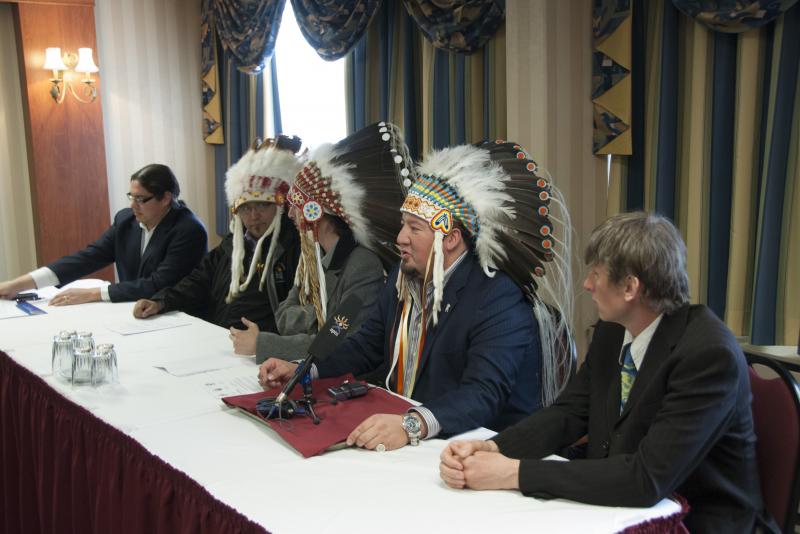
Press conference before Hudbay's meeting
Prior to the meeting, Chief Dumas, along with Chief Derek Nepinak of the Assembly of Manitoba Chiefs, Chief David Harper of the Manitoba Keewatinowi Okimakanak (MKO) and myself held a press conference about the problems with this project. In addition to the environmental impacts of this mine, free, prior, and informed consent from MCCN has not been given.
Within a few minutes of the start of Hudbay's presentation, a peaceful and emotional demonstration halted the event as First Nations activists delivered a message to the company. They object to Hudbay’s lack of care for Mother Earth, the legal proceedings against Chief Dumas after blockades took place on their territory, as well as the company’s abusive treatment of Guatemalan mine objectors.
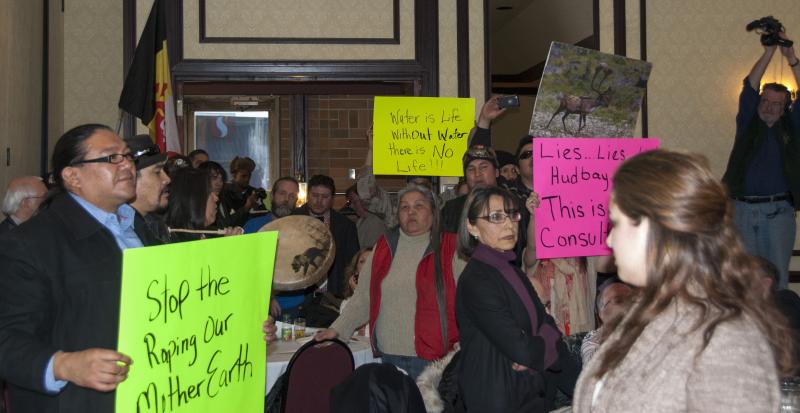
Objectors to the Reed Mine sending a message to Hudbay
The level of opposition to the Reed Mine project was best indicated by a quiet presenter who had related first-hand experience about the lands around the mine. At 10 p.m., after three hours of listening to Hudbay's explanations, she made her closing statement that she still objected to the mine, and mentioned that she had to leave to get to a 10 a.m. class the next morning. Someone asked where the class was, and she said it was in The Pas, an eight-hour drive away.
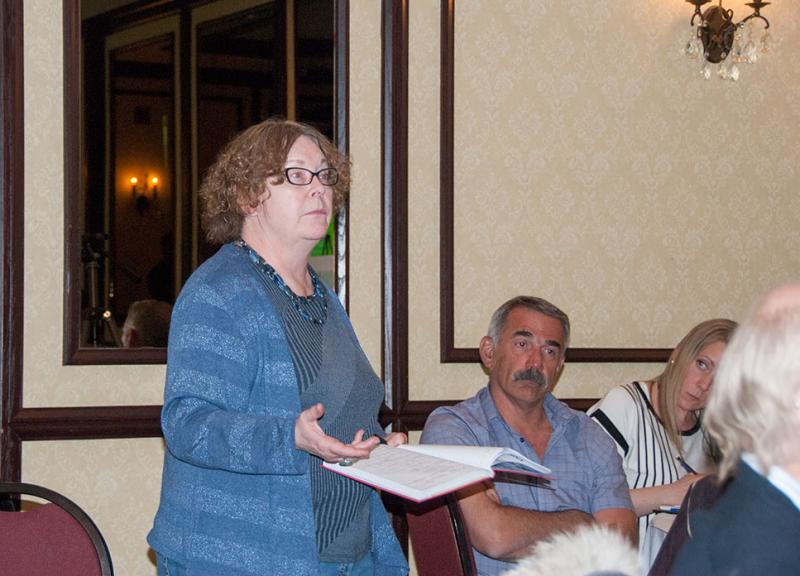
Gaile Whelan Enns from Manitoba Wildlands, raising concerns about the project
All evening long, the truthiness of Hudbay's statements and assertions needed to be corrected. In the company’s first presentation, I had to call them out on their comments about the water being released from the mine site. They claimed this water was going to be cleaned to a higher standard, yet upon further questioning they admitted that wasn't the case.
At this point I relayed to the attendees just how low the lowest water quality standard actually is. The toxicity test used to check water being released involves putting a bunch of rainbow trout into a tub of the contaminated water. If, after a length of time, only 50% of the fish are dead, the water is safe.
Hudbay objected, saying I didn't have my facts right. I had stated that the test was conducted over eight hours. Hudbay put me in my place by explaining the test took 96 hours, not eight. Again, if you've only killed half the fish in four days, the water is ready to be dumped back into our provincial park. Seems like a great plan.
To end the evening the moderator went around the room, allowing each attendee to give their final thoughts. Our assistant campaigner Alex and I were last, and my final question was about Hudbay's Namew Lake minesite. Hudbay did not seem to know anything about the site, other than to say it was closed in 1993 and that it was rehabilitated. Just a few minutes earlier, when Hudbay was given a chance to explain the mess they had left at their Spruce Point Mine Site, they didn't address the constantly bubbling pond I publicized in this video. Now they pleaded ignorance to any issue with Namew Lake minesite. I was forced to go dig out my laptop and search for photographs to illustrate my point, as Hudbay claimed everything there was fine.
While I was looking for the pictures, Alex made his closing query, about soil in Flin Flon so toxic with heavy metals that it became a health risk to children. One Hudbay employee laughed out loud in derision at this.
Alex got up and distributed this article to every table so people could read about it. When the Wilderness Committee was working on our toxins campaign in 2007, it came to light that Hudbay's Flin Flon smelter was the worst air polluter in the entire country. A health warning came out advising parents that their children shouldn't be playing outside without gloves on, for fear they would ingest heavy metals – which disrupt the normal growth of kids. This was no laughing matter, and we told Hudbay that.
As this heated exchange about the amusing nature of exposing children to growth disruptors was ending, I finally found the Namew Lake photo.
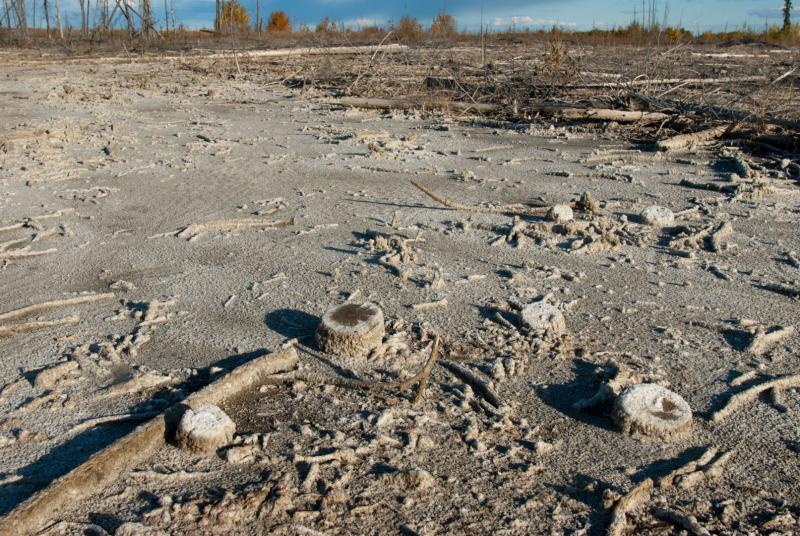
Visible impacts at Hudbay's Namew Lake mine site
There were audible gasps as it came up on the projector screen. Hudbay still didn't know anything about the photo, but said they would investigate. I mentioned that it was taken in 2011, and one would hope they had been to the sight since then, but apparently their monitoring program is not that stringent – nor is the government's.
What we came away with after that night was exactly what we knew coming in. This corporation – Hudbay Minerals – cannot be relied upon to safeguard our park, or our animals, or our water. The Environmental Licensing process is failing, as is the environmental legislation designed to protect water and wildlife, and our government is not making steps to improve them. And no matter how they try and spin it, or how many hundreds of pages the engineering proponents and the corporation throw at us, mining is a dirty, destructive business.
Mining is not green, as the government is trying to tell us. Mining has no place in our parks.
There is still time to tell the government how you feel about opening up a mine in a provincial park, which you can do through our website here.
Eric Reder | Manitoba Campaign Director
Top photo: Eric Reder with the endangered woodland caribou, whose habitat would be affected by Hudbay's Reed Mine in Grass River Provincial Park.
